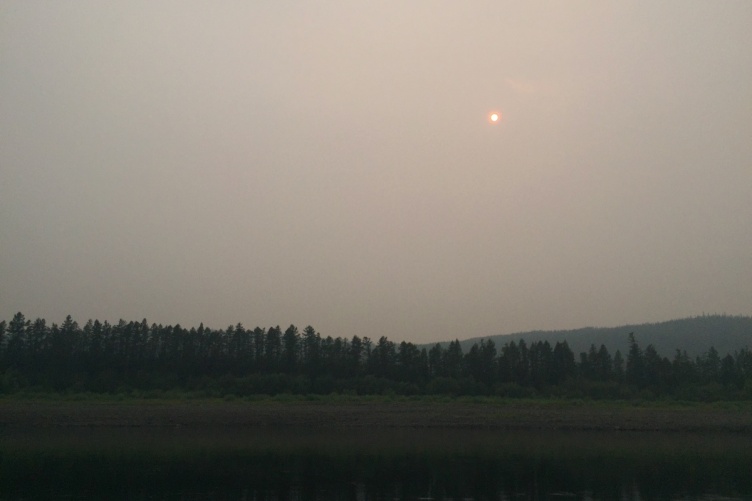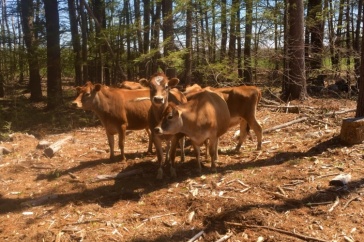
View of Siberian waterway after a forest fire. Smoke and soot linger in the air for several days even after rainfall.
Climate change has contributed to the increase in the number of wildfires across the globe, especially in the Arctic, where they can dramatically shift stream chemistry and potentially harm both ecosystems and humans.
New research from UNH finds that some of the aftereffects of a burn, like decreased carbon and increased nitrogen, can last up to five decades and could have major implications on nearby vital waterways like the Yenisei River that drains into the Arctic Ocean, and other similar waterways around the world.
“Forest fires in this region of the Arctic used to happen about every hundred years and now we’re seeing them every summer,” said Bianca Rodríguez-Cardona ’20G, who recently received a Ph.D. in UNH’s natural resources and Earth system sciences program. “This increase in fires leads to more input of inorganic solutes into local streams which can alter the chemistry and trigger issues like increased algae blooms and bacteria that can be harmful to humans who depend on these waterways for drinking water, fishing and their livelihood.”

In the study, recently published in the Nature journal Scientific Reports, UNH researchers collected stream water samples in the Central Siberian Plateau in Russia during June and July from 2016 to 2018. They compared the concentration of nutrients and dissolved organic matter in the streams and found that inorganic nitrogen, or nitrate, a nutrient important for cell development and growth in aquatic plants, remained elevated for 10 years after a burn. And, levels of dissolved organic carbon and dissolved organic nitrogen, major sources of energy, were substantially decreased and took 50 years to return to pre-burn levels.
Boreal forests — those that grow in high latitudes at low temperatures — have been burning with greater frequency due to longer growing seasons, warmer temperatures and changing weather patterns, adding additional uncertainty to how these ecosystems will be affected. While other studies have documented the effects of wildfires on stream chemistry, few have evaluated how these changes will impact the processing and export of nutrients from Arctic watersheds.
“Arctic rivers transfer large quantities of nutrients to the Arctic Ocean, and river water chemistry could be dramatically changed in the coming decades as permafrost thaws and wildfires become more frequent,” says William McDowell, professor of environmental science and a co-author on the study.
The researchers say even though responses of Arctic watersheds can vary from region to region, this study offers further understanding of what could happen in other areas of the Arctic, like Alaska, Canada, Norway or Sweden.
Adam Wymore, research assistant professor of natural resources and the environment, is a co-author on this study; other authors are from the National Council for Air and Stream Improvement, Inc.; V.N. Sukachev Institute of Forest SB RAS in Russia; the Pontchartrain Institute for Environmental Sciences at the University of New Orleans; and Florida State University. Rodríguez-Cardona is currently a postdoctoral fellow at the Université du Québec à Montréal.
This work was supported by the National Science Foundation.
-
Written By:
Robbin Ray ’82 | UNH Marketing | robbin.ray@unh.edu | 603-862-4864

















































